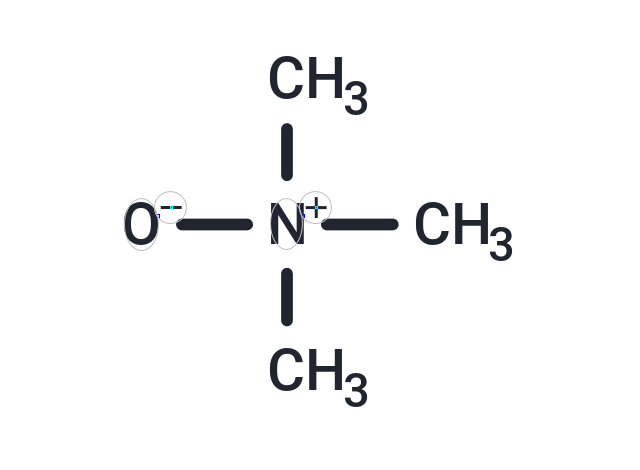Shopping Cart
Remove All Your shopping cart is currently empty
Your shopping cart is currently empty
Trimethylamine N-oxide (TMAO) is a gut microbiota-dependent metabolite derived from dietary choline, betaine, and carnitine. It induces inflammation by activating the ROS/NLRP3 inflammasome and promotes fibroblast differentiation through the activation of the TGF-β/Smad2 signaling pathway. TMAO is commonly used to induce cardiac fibrosis models.

| Pack Size | Price | USA Warehouse | Global Warehouse | Quantity |
|---|---|---|---|---|
| 100 mg | $29 | In Stock | In Stock | |
| 1 mL x 10 mM (in DMSO) | $30 | In Stock | In Stock |
| Description | Trimethylamine N-oxide (TMAO) is a gut microbiota-dependent metabolite derived from dietary choline, betaine, and carnitine. It induces inflammation by activating the ROS/NLRP3 inflammasome and promotes fibroblast differentiation through the activation of the TGF-β/Smad2 signaling pathway. TMAO is commonly used to induce cardiac fibrosis models. |
| In vitro | In vitro, the treatment of fibroblasts with Trimethylamine N-oxide (TMAO) results in an increase in both the size and migration of fibroblasts compared to untreated fibroblasts. TMAO induces an elevation in TGF-β receptor I expression, leading to the phosphorylation of Smad2 and an up-regulation in the expression of α-SMA and collagen I. Concurrently, the ubiquitination of TGF-βRI is decreased in neonatal mouse fibroblasts following Trimethylamine N-oxide treatment. Additionally, Trimethylamine N-oxide inhibits the expression of smurf2 [3].
Trimethylamine N-oxide is commonly found in the tissues of various marine organisms, where it serves as a protective factor against the adverse effects of temperature, salinity, high urea, and hydrostatic pressure [2]. |
| In vivo | Trimethylamine N-oxide can be utilized in animal modeling to establish a model of cardiac fibrosis. |
| Molecular Weight | 75.11 |
| Formula | C3H9NO |
| Cas No. | 1184-78-7 |
| Smiles | C[N+](C)(C)[O-] |
| Relative Density. | 0.9301 g/cm3 (Estimated) |
| Color | Yellow |
| Appearance | Solid |
| Storage | keep away from moisture,store under nitrogen | Powder: -20°C for 3 years | In solvent: -80°C for 1 year | Shipping with blue ice/Shipping at ambient temperature. | |||||||||||||||||||||||||||||||||||
| Solubility Information | DMSO: 40 mg/mL (532.55 mM), Sonication is recommended. H2O: 10 mg/mL (133.14 mM), Sonication is recommended. | |||||||||||||||||||||||||||||||||||
| In Vivo Formulation | 10% DMSO+40% PEG300+5% Tween 80+45% Saline: 2 mg/mL (26.63 mM), Sonication is recommended. Please add the solvents sequentially, clarifying the solution as much as possible before adding the next one. Dissolve by heating and/or sonication if necessary. Working solution is recommended to be prepared and used immediately. The formulation provided above is for reference purposes only. In vivo formulations may vary and should be modified based on specific experimental conditions. | |||||||||||||||||||||||||||||||||||
Solution Preparation Table | ||||||||||||||||||||||||||||||||||||
H2O/DMSO
| ||||||||||||||||||||||||||||||||||||
| Size | Quantity | Unit Price | Amount | Operation |
|---|

Copyright © 2015-2025 TargetMol Chemicals Inc. All Rights Reserved.